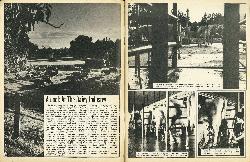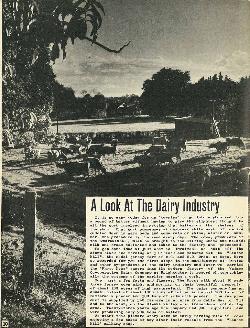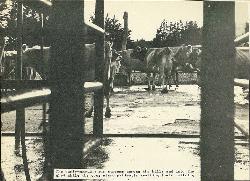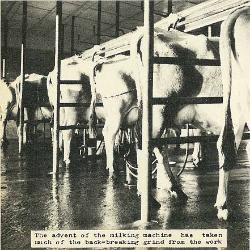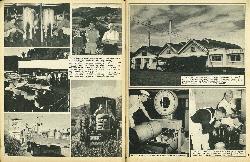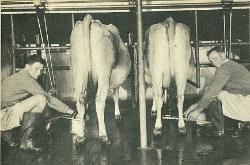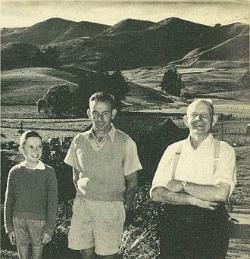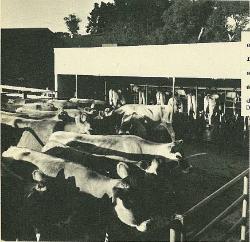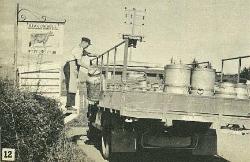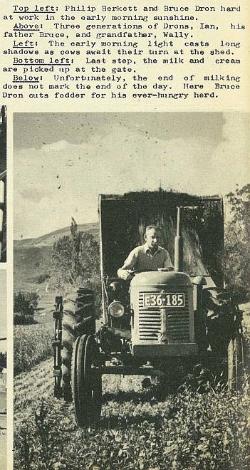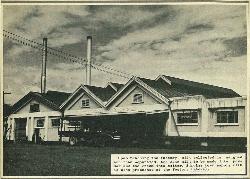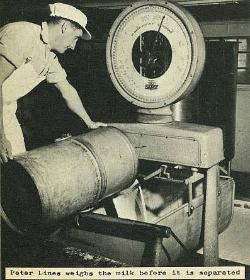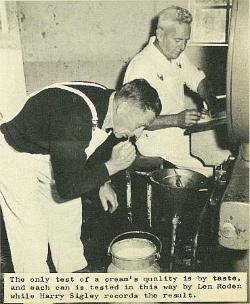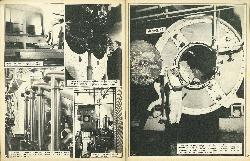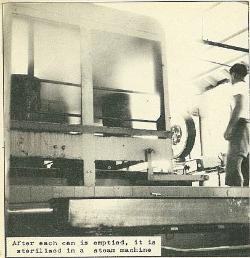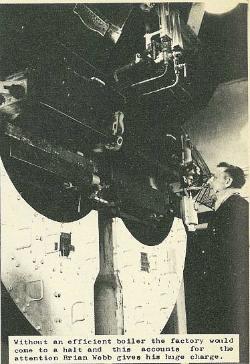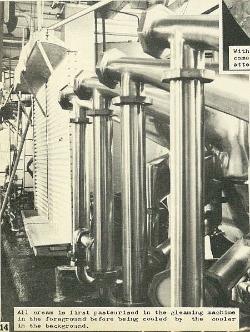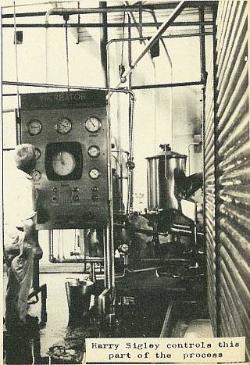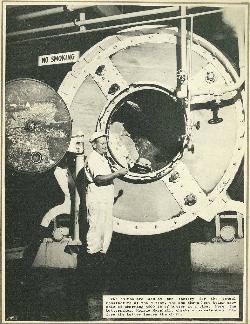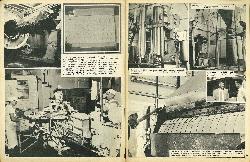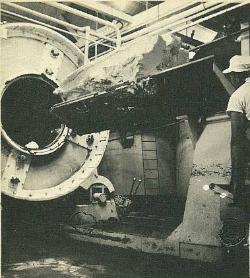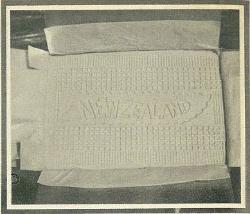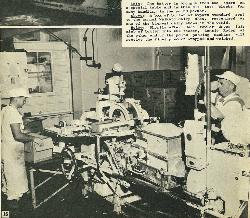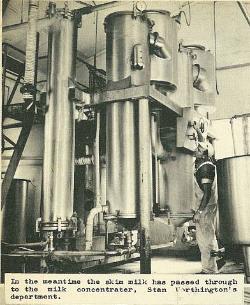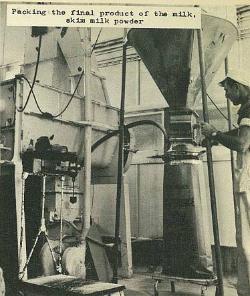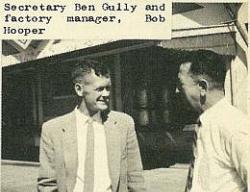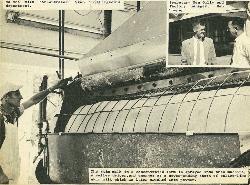10
A Look at the Dairy Industry
It is so easy today for us "townies" to go into a shop and buy a pound of butter without having to give the slightest thought to all the work involved in getting that butter on the shelves of the shop. That work commences at daybreak while most of us are cuddled down in warm beds and come rain or shine, winter or summer, the procedure is the same every day. The cows, producers of the wherewithal, must be brought to the milking sheds and milked? milk and cream collected and taken to the factory and processed.
To get some idea of just what is involved, we shut off the alarm clock one morning at 5 O'clock and motored out to "Beacon Hill", the model jersey farm of B.C. and W. D. Dron, at Hope. Here we recorded for you the first steps in the manufacture of butter and other by-products of the dairy industry and later we carried the "Photo News" camera into the modern factory of the Waimea Co-operative Dairy Company at Brightwater to record photographically the outcome of the earlier morning's work.
Now, Just a few facts and figures. The Drons milk about 50 pedigree jersey cows night and morning on their beautiful property of about 280 acres of lush pastureland. The dairy company has an annual output of about 1000 tons of butter and about 100 tons of buttermilk powder and 300 tons of skim milk powder. The raw product is supplied by 340 farmers in an area from Cable Bay to Tui and to the west, up the Riwaka Valley - a tremendous collecting area, Twenty-three years ago the company had 900 suppliers and were producing only 900. tons of butter.
We start this picture story with an early-morning view of cows enjoying a few bales of hay after their release from the "Beacon Hill" milking shed.
11
The early-morning; sun streams across the hills and into the shed while the cows stand patiently awaiting their milking
The advent of the milking machine has taken much of the back-breaking: grind from the work
While Lois Dron gives advice, Ian shows us just how the cups are applied to the udder.
12
Philip Berkett and Bruce Dron hard at work In the early morning; sunshine.
Three generations of Drons, Ian, his father Bruce, and grandfather, Vally.
The early morning light casts long shadows as cows await their turn at the shed.
Last step, the milk and cream are picked up at the gate.
Unfortunately, the end of milking does not mark the end of the day. Here Bruce Dron cuts fodder for his ever-hungry herd.
13
Upon reaching the factory, milk collected is weighed and then separated, the skim milk to be made into powder and the cream into butter. Surplus town supply milk is also processed at the factory (above).
Peter Lines weighs the milk before it is separated
The only test of a cream's quality is by taste, and each can is tested in this way by Len Roden while Harry Sigley records the result.
14
After each can is emptied, it is sterilised in a steam machine
Without an efficient boiler the factory would come to a halt and this accounts for the attention Brian Webb gives hie huge charge.
All cream is first pasteurised in the gleaming machine in the foreground before being cooled by the cooler in the background.
Harry Sigley controls this part of the process
15
Two churns are used at the factory for the actual manufacture of the butter, the one shown here being capable of churning 5600 lb of butter at a time. Here the buttermaker, Horrie Marshall, checks on consistency before the butter leaves the churn.
16
The butter is brought from the churn on a special table and is then cut into blocks for easy handling in the pound packer.
A box of butter of export standard sent to the annual Waikato dairy show, recognised as one of the biggest dairy shows in the world.
Shortly after Cecil Fowler drops this slab of butter into the feeder, Lennie Roden at the other end of the pound packing machine will receive the final product wrapped and weighed.
17
In the meantime the skim milk has passed through to the milk concentrater, Stan Verthington's department.
Packing the final product of the milk, skim milk powder
Secretary Ben Gully and factory manager, Bob Hooper
The skim milk in a concentrated form is sprayed into this machine, a roller driver,and emerges as a never-ending sheet of calico-like skim milk which is later crushed into powder.


